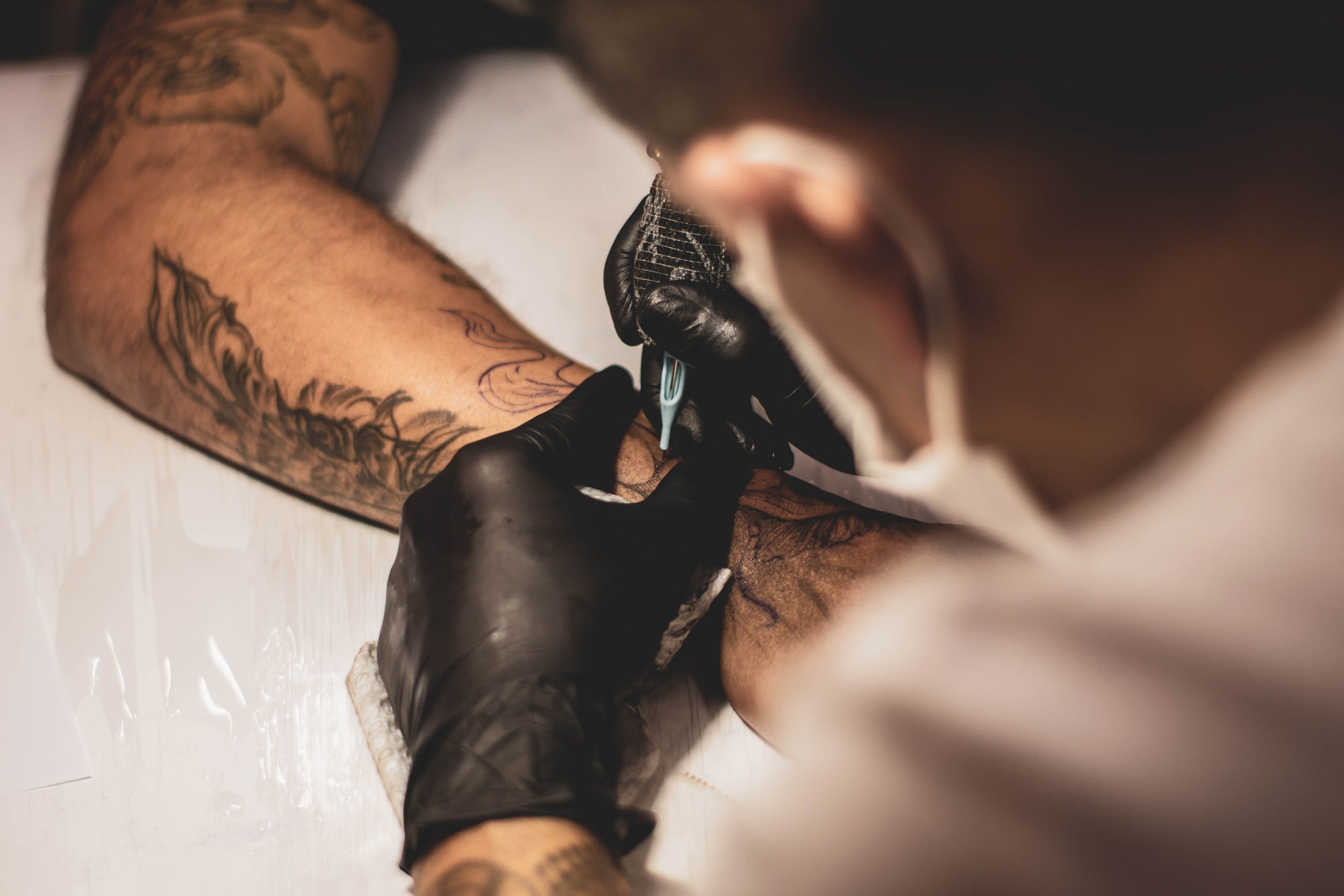Tattoos: Beyond Skin Deep
By: Dr. Denise Renye
Tattoos. For some time now, no longer are they relegated to sailors, prison inmates, gang members, and motorcycle riders. They used to be a sign of counterculture but now they are closer to mainstream. These days 30% of all Americans, regardless of age, have at least one tattoo, according to a poll by Ipsos in 2019. On top of that, a similar survey in 2012 found only 21% of Americans had a tattoo so the popularity of body art is increasing.
That’s not to say popularity is the same across the board. Age is a factor – 40% of those younger than 35 had at least tattoo, according to Ipsos, compared with 16% over the age of 54. What’s going on here? Why the uptick for younger folx especially? Tattoos can be a form of self-expression and a way to process trauma, for instance the death of a loved one. Tattoos can be a way to transform wounding and reclaim the body for the Self. Tattoos can increase embodiment. Tattooing does so by bringing attention and emphasis back to the body, to the skin, but also to the psyche. When you think about it, tattoos usually have a story associated with them: “I got this one when my family member or best friend died,” “My lover and I have the same tattoo,” “I wanted something to remind me of my roots,” etc.
Margot Mifflin writes in the book Bodies of Subversion: A Secret History of Women and Tattoo that, “Written on the skin – the very membrane that separates the self from the world – tattoos are diary entries, public announcements, conversation pieces, counter-cultural totems, valentines to lovers, memorial to the dead, reminders to the self. They are scars and symptoms, mistakes and corrections. Collectively they form a secret history of grappling with the self in relationship to body.”
Tattoos can be a mind-body affair. Even though the tattoo is external, it’s expressing something internal: a thought, a feeling, a memory. In fact, the British tattoo artist Chinchilla said that everything she inks on people is already inside them – she only opens the skin and lets it out. Tattoos are an external expression of the psyche for all the world to potentially see. It’s easy to see how the symbolic can be externalized, gaining a deeper understanding of one’s inner world. In that, the process of contemplating, designing, and receiving tattoos can have a real possibility of becoming an act of inner work. This may not be the same for someone who chooses the Tasmanian Devil off the wall in the first parlor they walk into. However, who am I to say that’s not an act of individuation in its own right?
Tattoos may help make unconscious material more conscious and support an individuation process, meaning integrating the conscious and the unconscious as well as developing and stabilizing the personality structure of an individual. Again, the symbols of the unconscious becoming conscious through the act of tattooing can also yield a space for a deepening of one’s spirituality. For example, someone who is at a certain stage in their spiritual development may realize they were more heavily operating from their intellect or mind and then feels called to drop down into their heart, and thus getting a chest tattoo that signifies an opening of their heart is a way to externalize the internal.
Paradoxically, while some folx use the process of tattooing to feel a connection to their body, others use it to dissociate. Dissociation here means not connecting to the body or Self. It means feeling removed or apart from. That process might happen due to the pain associated with tattooing: needles filled with ink puncture the dermis, the middle layer of skin, 50-3,000 times a minute. The immune system responds to this foreign invasion and activates the sympathetic nervous system. In some cases, getting a tattoo could be akin to someone putting a cigarette out on their skin or cutting. It is individualized and there is a wide range of psychological reasons someone may be drawn to getting ink.
Enjoy this embodied experience and have a great time swimming in the symbols that come through you and onto your body.
To set up an appointment with me (Marin County Sexologist), click here.
References
Golden-Alexis, Dr. Joan. “Written in the Flesh—The Transformational Magic of the Tattoo.” Philadelphia Association of Jungian Analysts Blog. July 16, 2018. https://phillyjunginstituteblog.wordpress.com/2018/07/16/written-in-the-flesh-the-transformational-magic-of-the-tattoo/#_edn4
Jackson, Chris. “More Americans Have Tattoos Today than Seven Years Ago.” Ipsos. August 29, 2019. https://www.ipsos.com/en-us/news-polls/more-americans-have-tattoos-today
Mifflin, Margot. Bodies of Subversion: A Secret History of Women and Tattoo. New York: powerHouse Books, 2013.

